Gaming, etc.
Light
Dark
The dreary landscapes that encapsulate Souls-like titles can certainly grow taxing with their frequency. However, when done justice, their brilliance makes for a thrilling experience. Grime manages to embrace this aforementioned philosophy. Its unique 3D environments mesh with a bizarre, otherworldly tone that creates a lasting impression amidst questionable design choices.
Grime has players explore an organically desolate world as a peculiar being made up of various rocks. The areas are full of odd creatures that instill a constant sense of uncomfortable identity within this thought-provoking environment. One of this title’s inherent strengths is its tone that is consistently unnerving yet strangely compelling. The enemies and seemingly friendly NPCs embrace this mystifying appeal of the unknown that is never afraid or ashamed of itself.
The gameplay is Souls-like, with a refreshing emphasis on platforming and an enforced defensive, combative style. When fighting, players can perform a counter if timed correctly, redirecting damage to an enemy or reflecting a projectile. Performing this maneuver also refills the orange gauge on the HUD, which grants heals. This mechanic is the crux of the combat and is worth relying on in almost every encounter. Red attacks can’t be dealt with in this manner, but countering is a vital tool used in most players’ experiences.
This wait-and-see approach to combat tends to find itself engraved within this genre, but Grime’s methodology retains aggression. Instead of countering being a supplement to the expected actions of swinging weapons, it is arguably the most vital component of the toolkit. The game begins with a stronger emphasis on this rather than standard combat because countering also deals damage and ties into another mechanic; traits.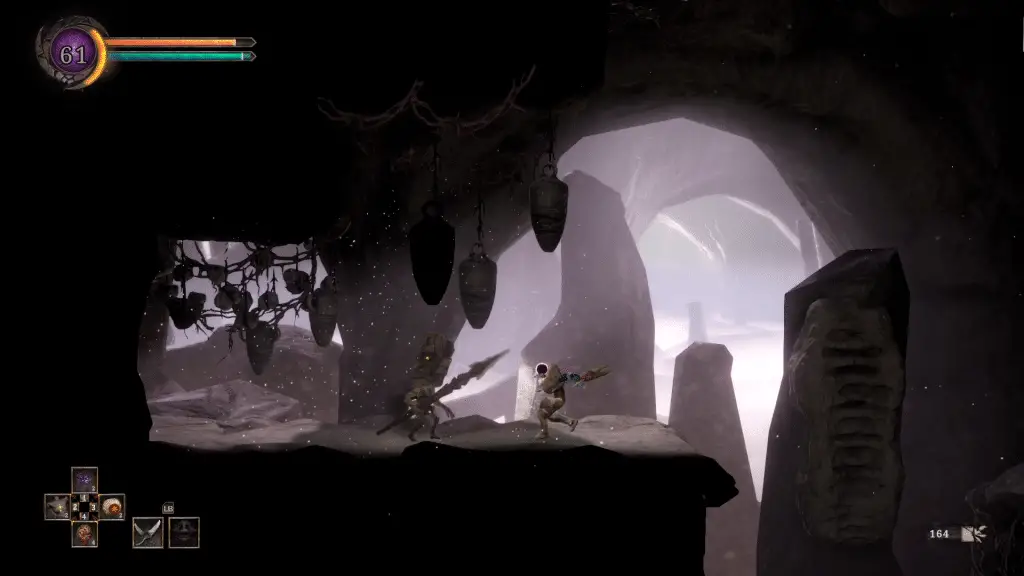
Various enemies are considered ‘prey’ to hunt, and hunting doesn’t consist of merely killing them ordinarily. Instead, this task is only influenced by destroying enemies with counters. Each enemy must be killed several times this way before their trait is available to be acquired. In addition, traits provide several benefits, such as increasing force (stamina) or altering how much damage is dealt—applying these properties aids in granting player agency, mainly due to enemies having to be chosen to be killed for these perks to be available.
Stat increases must be chosen when enough experience is gained. Thankfully, there are only five options to pick in Grime; health, force, strength, dexterity, and resonance. The former two are self-explanatory, with force being the label for stamina, while the latter three directly affect damage and the types of weapons one can equip.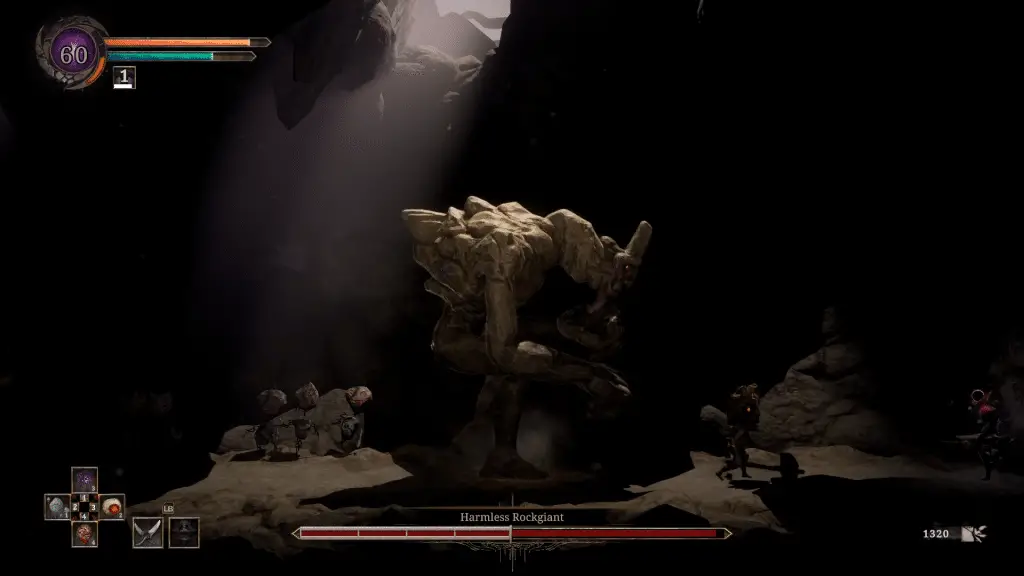
There are numerous weapons to find and wield, and they all contain prerequisite stats needed for usage. The differences between weapons range from individualized special abilities to power and swing speeds. In addition, several combative play styles are available to embrace even when a defensive play is required to achieve traits.
As expected, there are consumable items that have particular usages. Some immediately deploy damage, for instance, while others heighten defense or attack for select amounts of time. The top left of the screen has a number that determines how much expanded experience is gained. This number decreases when taking damage, so this is a lite tense mechanic that aids in granting a moderately thrilling sense of being adept when untouched.
All of these factors serve to make the gameplay a continually engaging affair and rarely dull. However, the boss battles in Grime can, unfortunately, be underwhelming. While specific enemy placements can be occasionally frustrating, such as picking up an item in a location where an enemy can ambush you, deaths will likely result from uncomplicated platforming or area contextual mishaps rather than legitimate feats of provocative challenge. In addition, the boss battles are straightforward in execution and lackluster. Personally, their attack telegraphs and wind-ups for abilities came off as too generous, only requiring a few attempts to comprehend.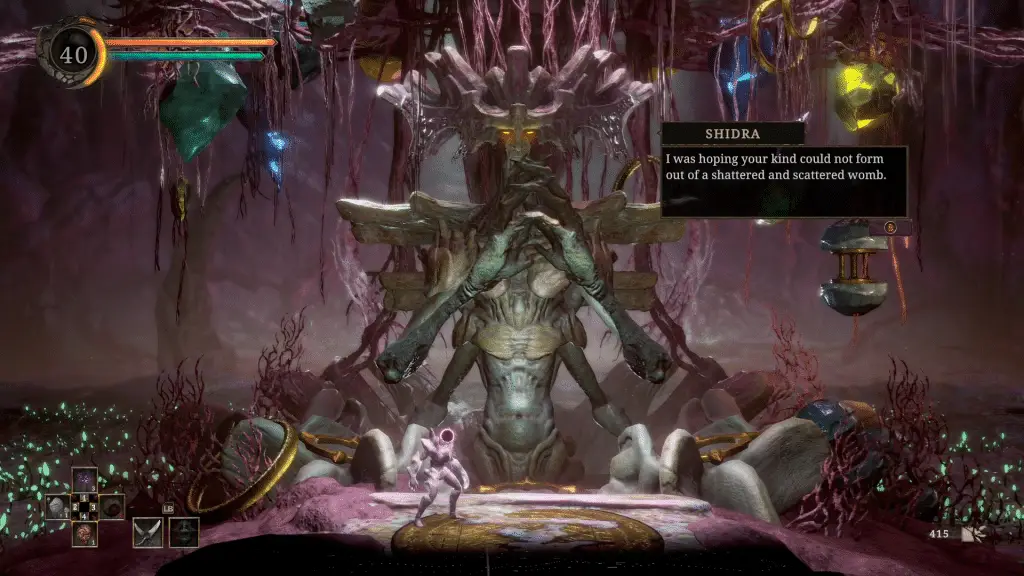
While I would much rather have fair and transparently designed bosses over broken ones, these battles only marginally impacted the game’s pace, making the fights somewhat unmemorable despite their awesome designs. Additionally, backtracking to areas after death from checkpoints never felt particularly frustrating, thanks to the compact map size and the numerous shortcuts that can be opened and utilized after making benchmarks of progress.
As noted earlier, the art style of Grime is exceptional due to its grim and surreal environments coupled with the unconventional cast, and the soundtrack only amplifies this atmosphere. There were many points where it felt like I was listening to the score of a high-budget film with how shockingly grand and imposing its force tended to be. Furthermore, the sound design is noteworthy for how crunchy and realistic it makes impacts and the like come across, but some absences had me perplexed.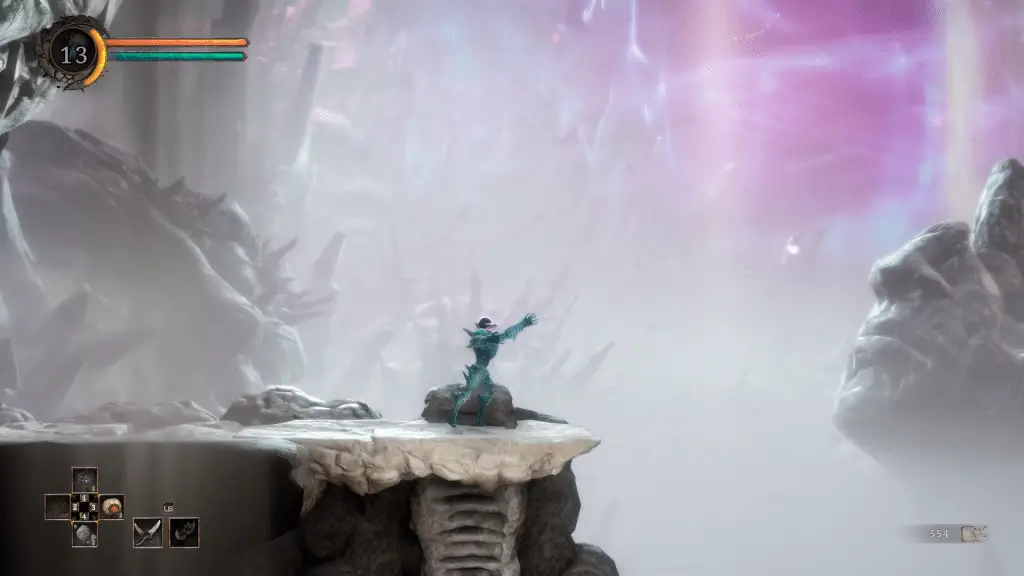
For instance, when selecting which stats to increase, there is no accompanying sound to indicate the decision. While this may seem like a petty critique, having auditory reinforcement alongside every action inestimably aids in a positive association. So, while bettering my stats was always a beneficial task, it lacked the punch it would have otherwise provided had the game acknowledged it more vocally. Backing out of menus and navigating over spaces in the menus also contains this absence. Hopefully, this fault is addressed since it took me out of the experience at points.
Lastly, the title’s performance was haphazard. Even when playing on the lowest graphical settings available, certain map areas lagged, some areas more than others. Of course, this lack of optimization was never a game-ruiner by any means since it was always playable and never caused me any deaths or other failures. Still, it is worth noting, so here’s hoping these performance faults will be addressed soon.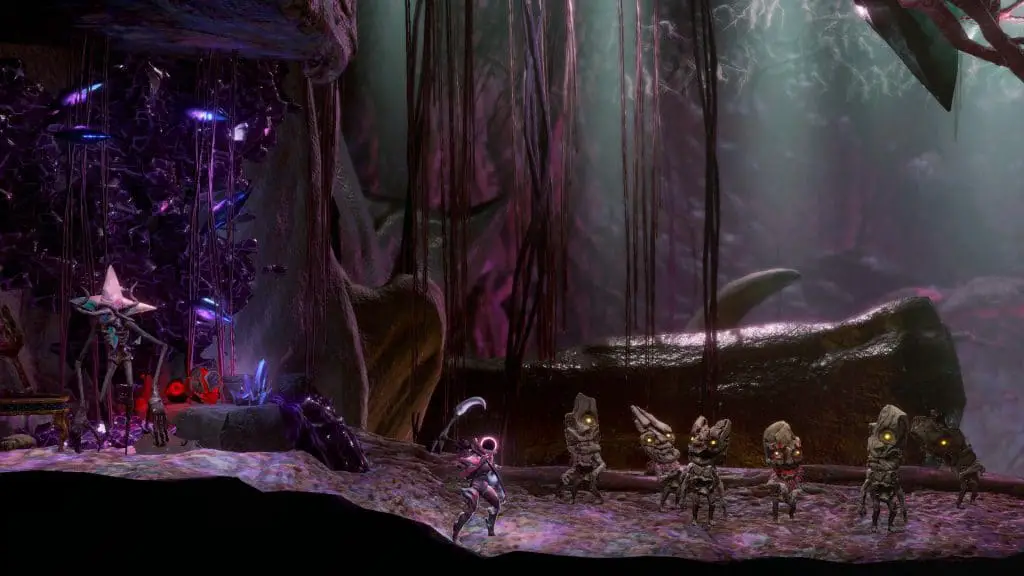
Grime is a Souls-like experience that’ll cleanse your pallet between the more significant releases of the genre. It mainly acts as filler, but it also keeps your reactions to tense action gameplay in top shape for whatever you’ll play next. The atmosphere really sells the dreary adventure with the help of an excellent artistic design, a stellar soundtrack, and engaging combative mechanics. Still, there’s a noticeable lack of boss spectacle and challenge required to at least cause a few fist clenches.
Random gamer equally confused by the mainstream and the unusual. Fan of JRPGs, Action, Platformers, Rhythm, and Adventure titles.
Our reviews can be found on Metacritic and Opencritic.
Copyright © 2022 Noisy Pixel. All rights reserved.

